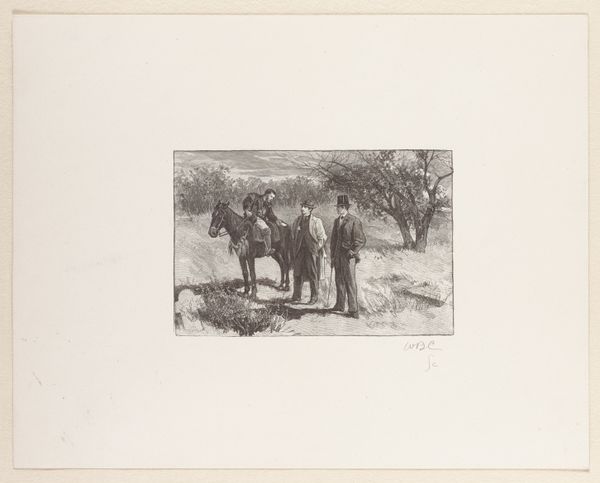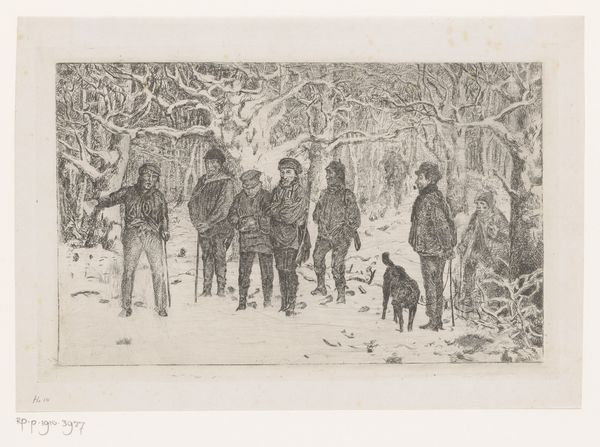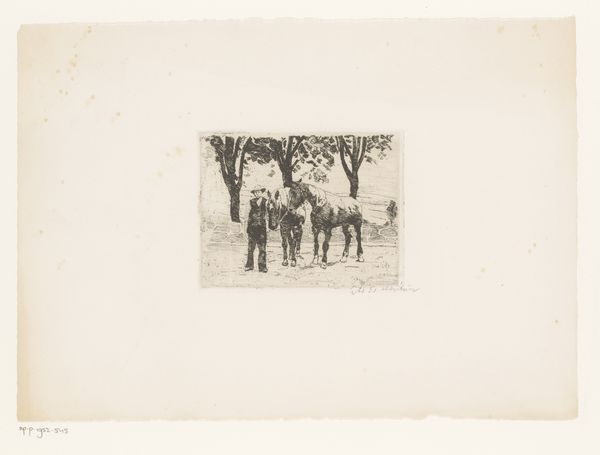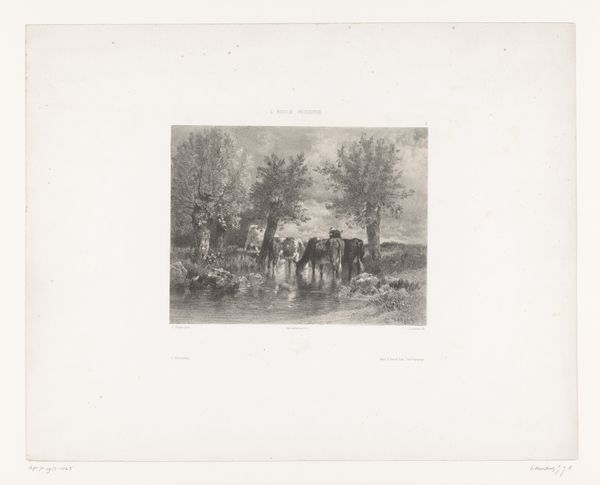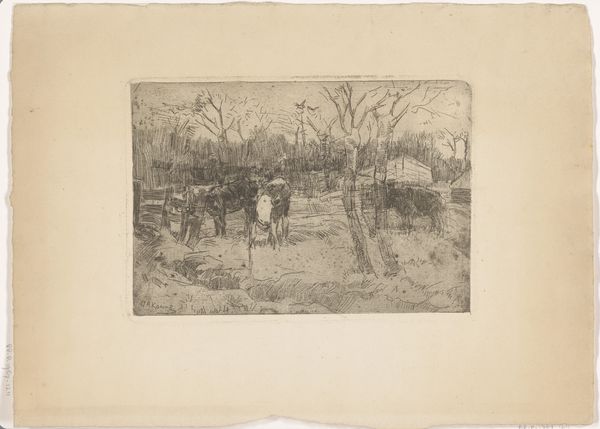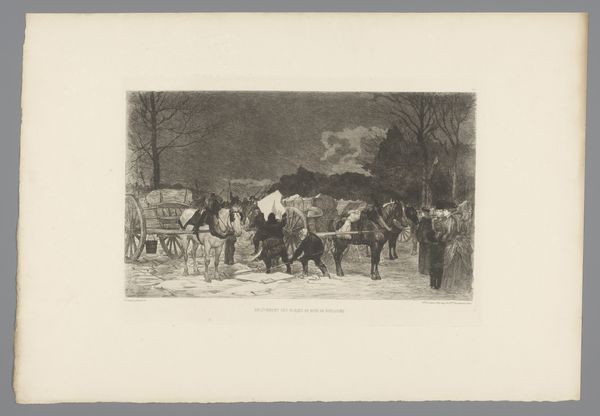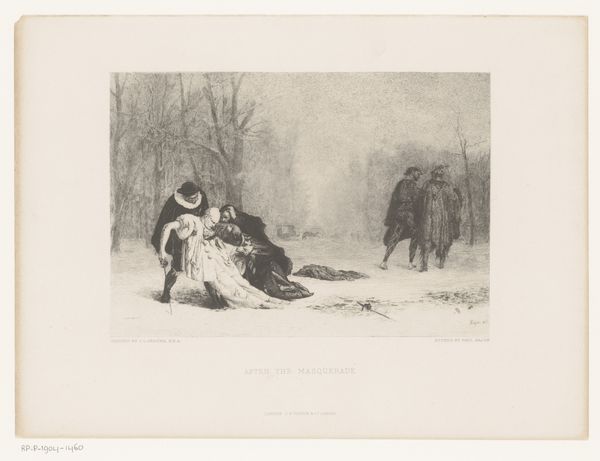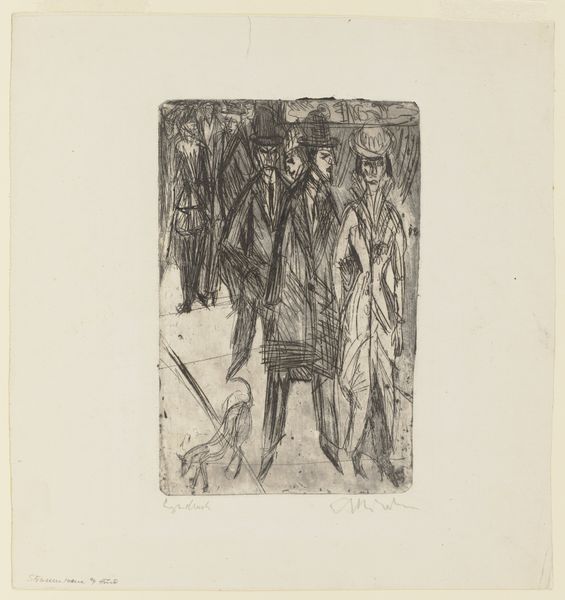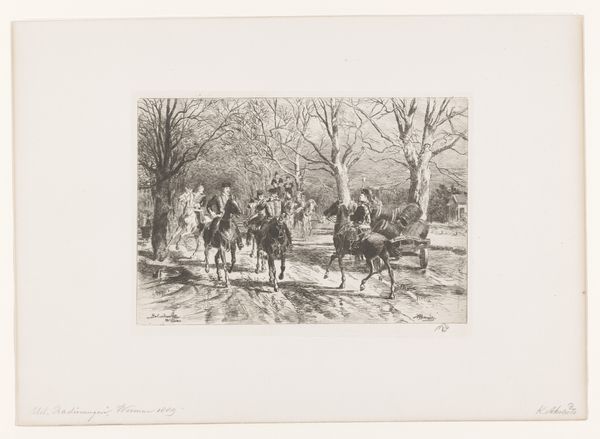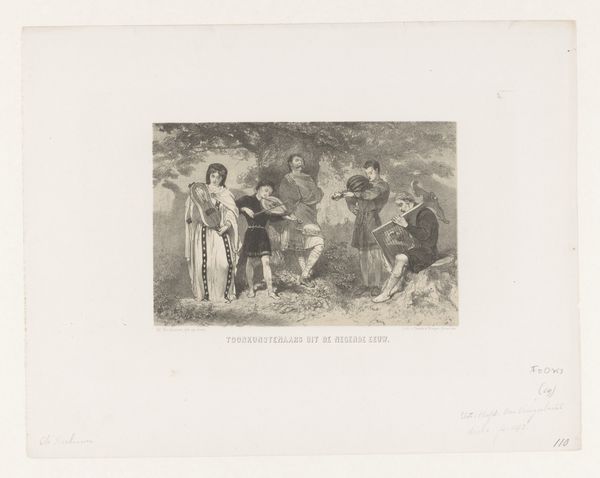
drawing, print, etching, engraving
#
drawing
#
narrative-art
# print
#
etching
#
landscape
#
soldier
#
genre-painting
#
history-painting
#
engraving
#
realism
Dimensions: height 270 mm, width 350 mm
Copyright: Rijks Museum: Open Domain
Curator: Jan Mesker's etching, "Soldiers Detaining a Man," likely created between 1867 and 1874, invites us to consider the tensions of the time. Editor: It's bleak. The soldiers in their dark uniforms dominating the foreground against that almost desolate landscape... it speaks to a palpable sense of unease, a disturbance. Curator: The print, through its lines and shading, indeed evokes a particular mood. It would be worthwhile to consider the printmaking process here; etching requires acid to bite into a metal plate, which then holds the ink. Each line represents a physical and chemical process. The very means of production lends itself to stark contrasts. Editor: And those stark contrasts underscore the power dynamics at play. Look at how the central figure, the detained man, is positioned. He’s surrounded, his posture seems submissive. It is more than genre painting—this image is charged. What does it suggest about citizenship and state power? About who has the right to free movement? Curator: We should keep in mind Mesker's Realist approach and the tradition of history painting; this likely depicts a common encounter, even if elevated through artmaking. He transforms this moment through technique. Consider how he might have leveraged his sources to communicate. Editor: But realism itself is never neutral. Whose reality are we seeing? What does Mesker leave out? What's the social narrative? The very act of depicting this scene normalizes it, even while perhaps commenting on its injustice. We see this play out through questions of visibility and artistic representation in later art and activist movements. Curator: True, but acknowledging the method and labor allows us insight. The choices Mesker made regarding the selection of paper and the inking are crucial decisions and are deeply entwined with the impact. It is vital to consider those elements. Editor: And it’s vital to consider that this interaction—soldiers detaining an individual—has echoes throughout history, resonating differently depending on one’s social position and lived experience. It’s a powerful, if disquieting, work. Curator: Precisely. This print holds multiple interpretations regarding its material construction and lasting significance.
Comments
No comments
Be the first to comment and join the conversation on the ultimate creative platform.
